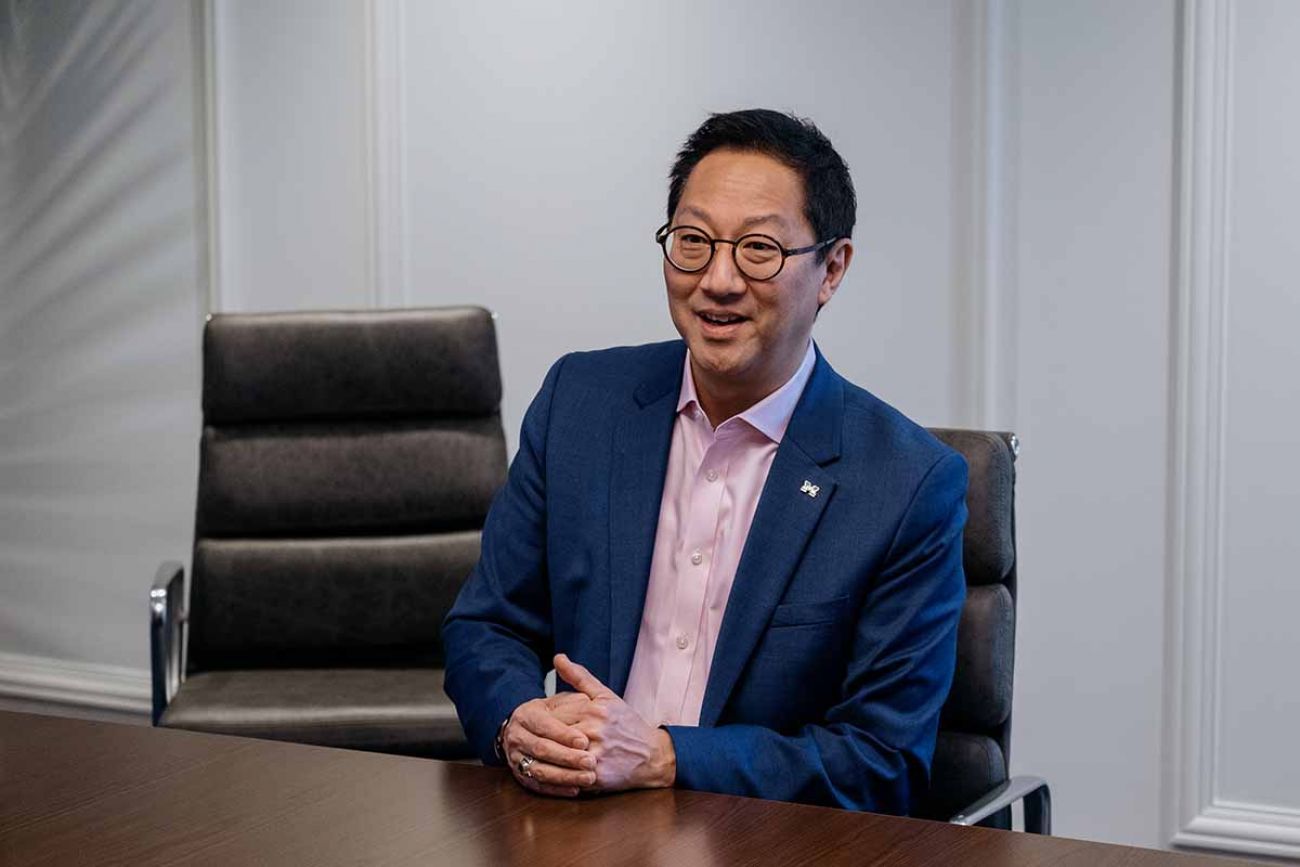What’s next for U-M? Santa Ono successor to face DEI, Trump, elitism questions

- Santa Ono, who came to U-M in October 2022, is leaving for the University of Florida
- A new president faces internal and external headwinds, from a distrustful faculty to a skeptical public
- Short-term issues include a big loss of federal funding and internal pressure to fight Trump edicts
University of Michigan President Santa Ono came to Ann Arbor 2 ½ years ago with a reputation as an elite academic talent with a huge personal touch. He’s leaving amid tensions about U-M’s response to Trump administration cuts.
Seven months after signing a contract extension that boosted his annual salary to $1.3 million and was described as one of the most lucrative in higher education, Ono announced Sunday he’s leaving to become president of the University of Florida by this summer.
In doing so, he’s ending the shortest presidential term in U-M’s history — and leaving amid frustration among some in Ann Arbor over the university’s relative silence in resisting Trump’s cost-cutting and cultural measures.
“He’s been more or less invisible particularly this year, since January when the new government came into office,” Faculty Senate Chair Derek Peterson said of Ono.
While it could take weeks or months to know what prompted Ono to leave, those watching the university say his successor will inherit big issues, from rebuilding trust with students and faculty and responding to wholesale cuts to federal research to a growing national dissatisfaction with higher education.
In the past year, Ono, 62, faced scrutiny over how he handled protests about the Gaza war and the university’s decision to halt diversity, equity and inclusion efforts. That followed some grumbling over the administration’s handling of a 2023 strike by graduate student workers.
Experts told Bridge Michigan they anticipate the next leader will need to be more comfortable than Ono in the political aspect of the job, while balancing federal research cuts.
“Whoever they hire … has to be prepared to be under intense scrutiny locally, under intense scrutiny federally, to be able to manage a lot of different kinds of challenges,” said Brendan Cantwell, a professor of higher education and policy at Michigan State University.
Related:
- Michigan drops charges against pro-Palestinian protesters at U-M
- Fact check: Donald Trump tells Michigan ‘our golden age has just begun’
- Donald Trump restores student visas after revoking 70-plus in Michigan
The university has lost millions of dollars in federal contracts and is under investigation by the federal government for its participation with the The PhD Project, a national organization founded in 1994 as a means to help diversify the pool of business professionals, including academic faculty.
Michigan has the attention of the federal government, Cantwell said, “and that’s unenviable.”
Here are questions and answers about what to expect for the next several weeks and months in Ann Arbor.
Short term
Who will be the next U-M leader?
Ono will stay at U-M “as long as needed to establish an interim president,” the Board of Regents said in a Sunday night email.
An interim president could be named soon. Interim leaders are often appointed at universities before a search process can be completed for the next leader.
Medium term
How does a major research university move forward after federal cuts?
The Trump administration has reshaped higher education by cancelling federal research contracts, revoking (and restoring) legal status for some international students and threatening funding cuts unless universities end diversity, equity and inclusion programs.
Ono warned of “serious repercussions” to the school’s budget in February after the Trump administration canceled a $15 million Social Security study that involved the university.
While it’s unclear exactly how much U-M has lost, the university along with Michigan State and Wayne State are projected to lose $200 million collectively because of the loss of National Institutes of Health grants, according to a February Michigan Attorney General press release.
U-M, which has an endowment estimated to be about $19.2 billion, is providing temporary funding for employees, students and researchers who have received stop work orders or federal funding terminations.
But Cantwell said the next president will have to make decisions related to faculty hiring and if the university needs to contract or expand in the wake of these federal changes.
Is U-M doing enough or too little?
Trump’s efforts to end DEI efforts have faced court challenges but U-M announced in late March the closure of two DEI offices and ended DEI programming.
One estimate pegged the cost of the programs at $250 million.
In a campus message, Ono said programming, training and funding associated with the school's DEI strategic plan would end but that the university would expand financial aid, increase mental health support for students and maintain “multicultural spaces” across campus.
That wasn’t a universally popular move.
Peterson, a history and African studies professor, said U-M has a duty to defend public higher education.
“What we need is a fighter, not a conformer,” said Peterson, the Faculty Senate chair.
He wants U-M to follow the lead of Harvard University, which refused to comply with a series of demands from Trump, prompting him to freeze $2.2 billion in federal funding and threaten to remove its tax-exempt status.
In response, Harvard is suing the Trump administration.
The Faculty Senate recently passed four resolutions aimed at creating a mutual defense pact against Trump with other Big Ten schools, defending academic freedom, restoring DEI initiatives and protecting international students from immigration officials.
U-M is not required to take action based on these resolutions.
Zoe Dong, a masters student and communications co-chair of the Graduate Employees’ Organization, told Bridge “Ono’s administration has kind of caved to pressure from the Trump administration.”
“Protecting students’ right to free speech and rights to study and work safely on campus without fear of their visa and immigration status changing is a huge challenge coming up,” Zong said.
How should U-M handle protests?
There have been several pro-Palestinian protests over the last two years including at the May 2024 commencement ceremony, a nearly months-long encampment on the Diag in the spring of 2024, and an incident where some brought fake body bags covered in artificial blood to the home of Sarah Hubbard, the former board chair.
Ono took a fairly hard stand, upsetting many. Rebekah Modrak, the previous Faculty Senate chair, told Bridge the campus has felt like a “police state” in the last year.
The university suspended the pro-Palestinian group Students Allied for Freedom and Equality (SAFE) for up to two years and is no longer recognized as a student organization following the protests.
Attorney General Dana Nessel had pursued charges against seven people for their connection to the encampment. She announced Monday she was dropping those charges.
But there are still other legal battles related to campus protests.
Last week, eight former university employees sued university officials including Ono alleging their First Amendment rights had been violated for being terminated after participating in pro-Palestinian efforts.
Board members approved an institutional neutrality stance in October 2024, where the university largely does not comment on political or social issues.
How does the president work with the current board?
Voters elect regents in statewide elections for 8-year terms.
Cantwell said he does not have internal knowledge about the board but the way board members were talking about DEI ahead of when the university cut the programming suggests members were not in lockstep.
In April, five Democratic regents wrote an op-ed in The Michigan Daily, the student newspaper, that did not name Ono or Trump but offered a rousing defense of academic independence.
“Authoritarian regimes so often seek control over their universities. Free inquiry is a threat to unchecked power,” the regents wrote. “Now, that principle is being tested throughout the United States — even here at the University of Michigan.”
Cantwell, the MSU professor, noted that Ono — on paper at least — had a better job at U-M. It generally ranks higher academically than the University of Florida, and its trustees are elected by voters, rather than governor appointees.
“Michigan’s a more prestigious university,” Cantwell said. “But even beyond that, Michigan has a great deal of autonomy because of the structure of higher education in the state of Michigan. And the University of Florida has much less autonomy. There is a meddlesome governor, there is a state board of higher education and a governing board for the university that is very active and involved in all aspects of the university including the curriculum.”
Cantwell acknowledged that money could be a factor for Ono. The University of Florida compensation package for its president could total $3 million per year, according to the Gainesville Sun.
Long term
Does the university need to change?
Beyond today’s disputes, many at U-M and other universities acknowledge that higher education is facing something of an existential crisis.
Trust in universities has declined, U-M officials privately acknowledge there’s a perception of elitism and being out of touch politically with the rest of the nation and tuition costs are rising.
As a result, enrollment among high school graduates in Michigan is declining.
While regional public universities have struggled with enrollment, U-M continues to have strong application and enrollment numbers — in part due to international students who could have more trouble getting visas under Trump.
In its effort to recruit middle-class students, U-M is expanding its Go Blue Guarantee, which covers students’ tuition at the Ann Arbor campus if their family income is below $125,000.
Sandy Baruah, CEO of the Detroit Regional Chamber, told Bridge the chamber has worked with Ono and his team on communicating the value of a higher education.
“I think the University of Michigan and our other (research) universities all have a responsibility to make that point, to make that case. The value of higher education is critical to the state of Michigan. So I would think it’s a very appropriate role for all of our higher ed leaders.”
Michigan Education Watch
Michigan Education Watch is made possible by generous financial support from:
Subscribe to Michigan Education Watch
See what new members are saying about why they donated to Bridge Michigan:
- “In order for this information to be accurate and unbiased it must be underwritten by its readers, not by special interests.” - Larry S.
- “Not many other media sources report on the topics Bridge does.” - Susan B.
- “Your journalism is outstanding and rare these days.” - Mark S.
If you want to ensure the future of nonpartisan, nonprofit Michigan journalism, please become a member today. You, too, will be asked why you donated and maybe we'll feature your quote next time!






